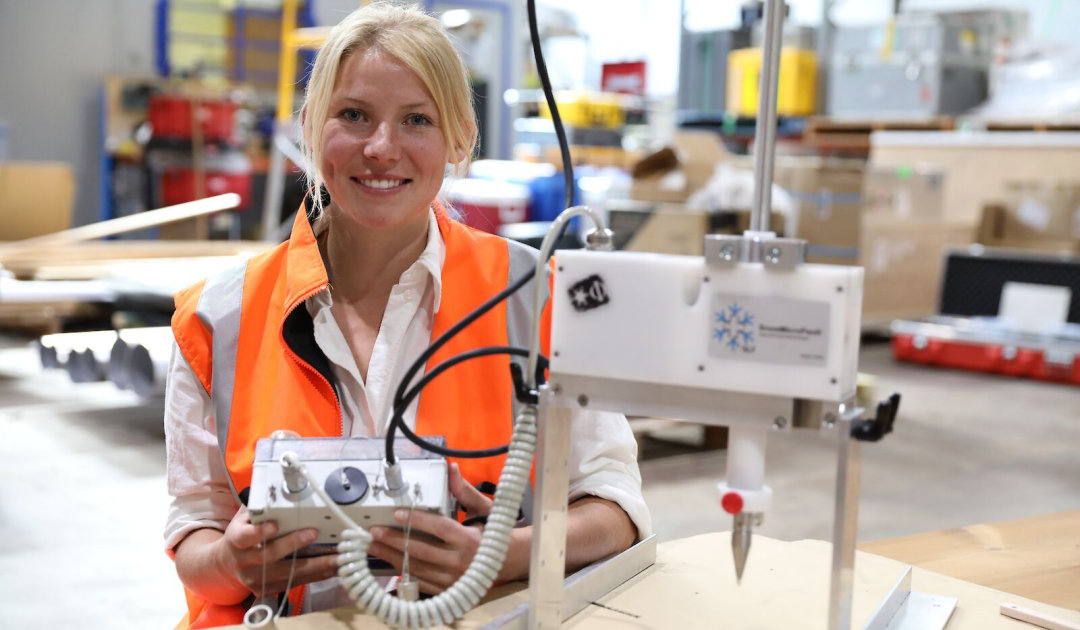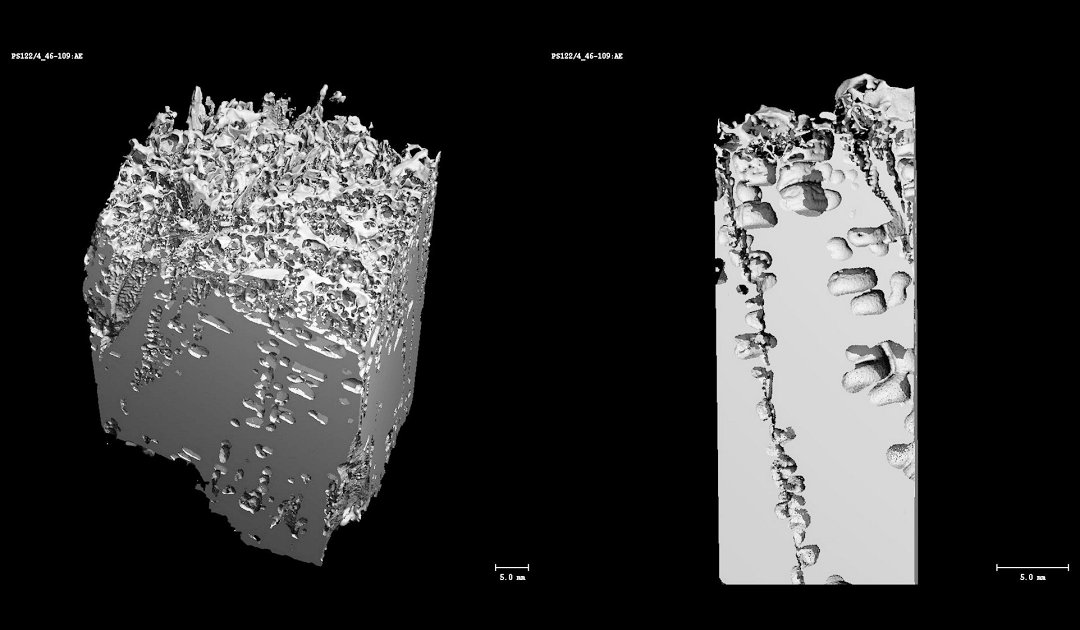
The fact that this year the extent of Antarctic sea ice has set a massive negative record and has been diminishing for several years has startled the research world. An international project now wants to find out more about this loss using various methods from space to the microstructure of ice and snow. Also involved is a hi-tech device that was developed in Switzerland and has already provided answers in the Arctic.
The SnowMicroPen®, which will be used by the research team led by the University of Canterbury in New Zealand, was developed at the Swiss Federal WSL-Institute for Snow and Avalanche Research and is now in its fifth version. The device was developed by the emeritus director of the institute, Dr. Martin Schneebeli in collaboration with Dr. Jerome B. Johnson back in 1998. At that time, the two researchers had discovered that microstructures of different snow types significantly determine the physical properties of different snow layers. To visulaize these structures, they developed the SnowMicroPen®, which measures the probe’s resistance to penetration into the snow and can thus display the stratifications. These in turn determine how the snowlayers as a whole react to external influences such as solar radiation and temperature differences, and whether and how the snowpack acts as an insulating and reflective material.
The device, which weighs just under 7 kilos, consists of two parts, a mechanical unit with probe, rods and motor, and a control or measurement unit, whereby everything can be pulled to the measurement sites on a pulka, a sled. The probe measures the resistance while the motor pushes it through the snow layers at around 20 millimeters/second. The measured data is then evaluated and visually displayed in a kind of scan model. Here, the resolution is 4 micrometers, which allows an unprecedented level of detail of the snow structures. Researchers can use the SnowMicroPen® to examine snowpacks up to 2.2 meters thick, which is quite sufficient on sea ice. The instrument eliminates the need to dig snow pits to determine snow layers.


Snow physicist Dr. Amy Macfarlane, the first recipient of the new Mawson-Mertz Fellowship, has been in Australia since September, working with Dr. Petra Heil of the Australian Antarctic Division as part of the international research team investigating the background to the massive sea ice loss around Antarctica. “I’ll be finding and collating historical and modern datasets that have been collected on the sea-ice snow microstructure during voyages around Antarctica,” explains Dr. Macfarlane. “I’ll aim to get these datasets into a format that anyone can use, to enhance their value and application in future research.I’ll also investigate how the snow microstructure is influencing albedo in Antarctica and how well this process is represented in climate models.” In doing so, Dr. Macfarlane can draw on a wealth of experience, having spent seven months in the Arctic during the MOSAiC expedition as part of her dissertation, collecting myriad, important data on snow cover on Arctic Ocean sea ice.

Dr. Macfarlane supports her Australian colleagues such as Sean Chua, who is also part of the international team. He will use the device in the Ross Sea this season. “I will be part of a ground team that will take measurements of sea ice thickness and snow thickness along a transect over the sea ice to validate and calibrate simultaneous airborne and satellite measurements over the study area,” he explains. The plan is to pair these measurements with a flyover by an aircraft of the same sites. The aircraft carries the EMBird, a type of radar that uses electromagnetic waves to measure the thickness of snow and ice on the sea ice. In addition, the measurement results will be combined with satellite data to cover the largest possible area of sea ice. “The idea is that once you have a good data set to calibrate from the ground, you can fly a campaign that covers hundreds of kilometers of sea ice per day without the need for further measurements from the ground,” explains Dr. Petra Heil.
Ultimately, researchers hope, the data will show whether the loss observed this year was just an outlier, or whether Antarctic sea ice now also shares the fate of the West Antarctic Ice Shelf, which will irreversibly fall victim to global warming.
Dr Michael Wenger, PolarJournal
Link to the website of the SLF and the SnowMicroPen(R)
More about this topic






